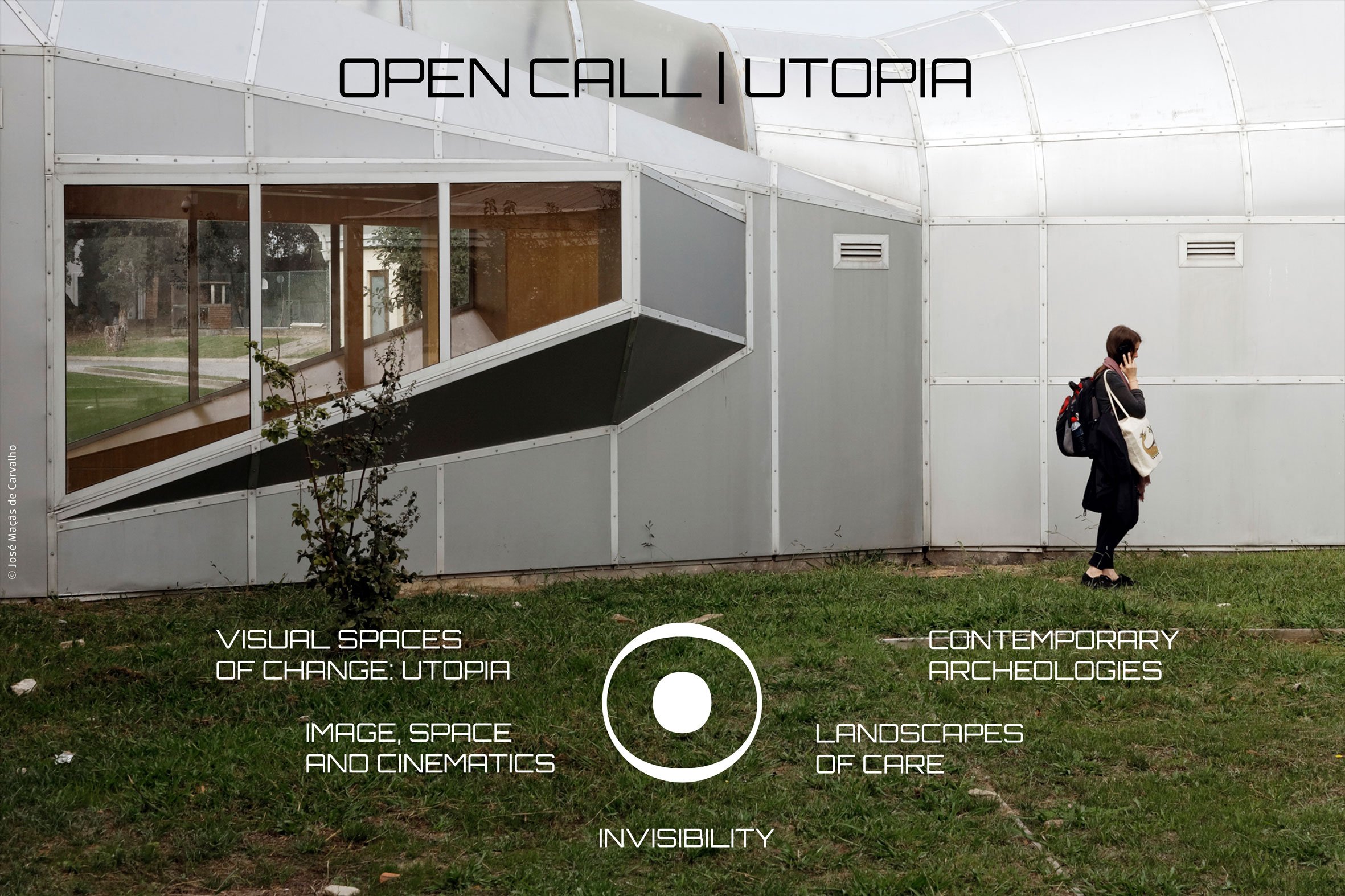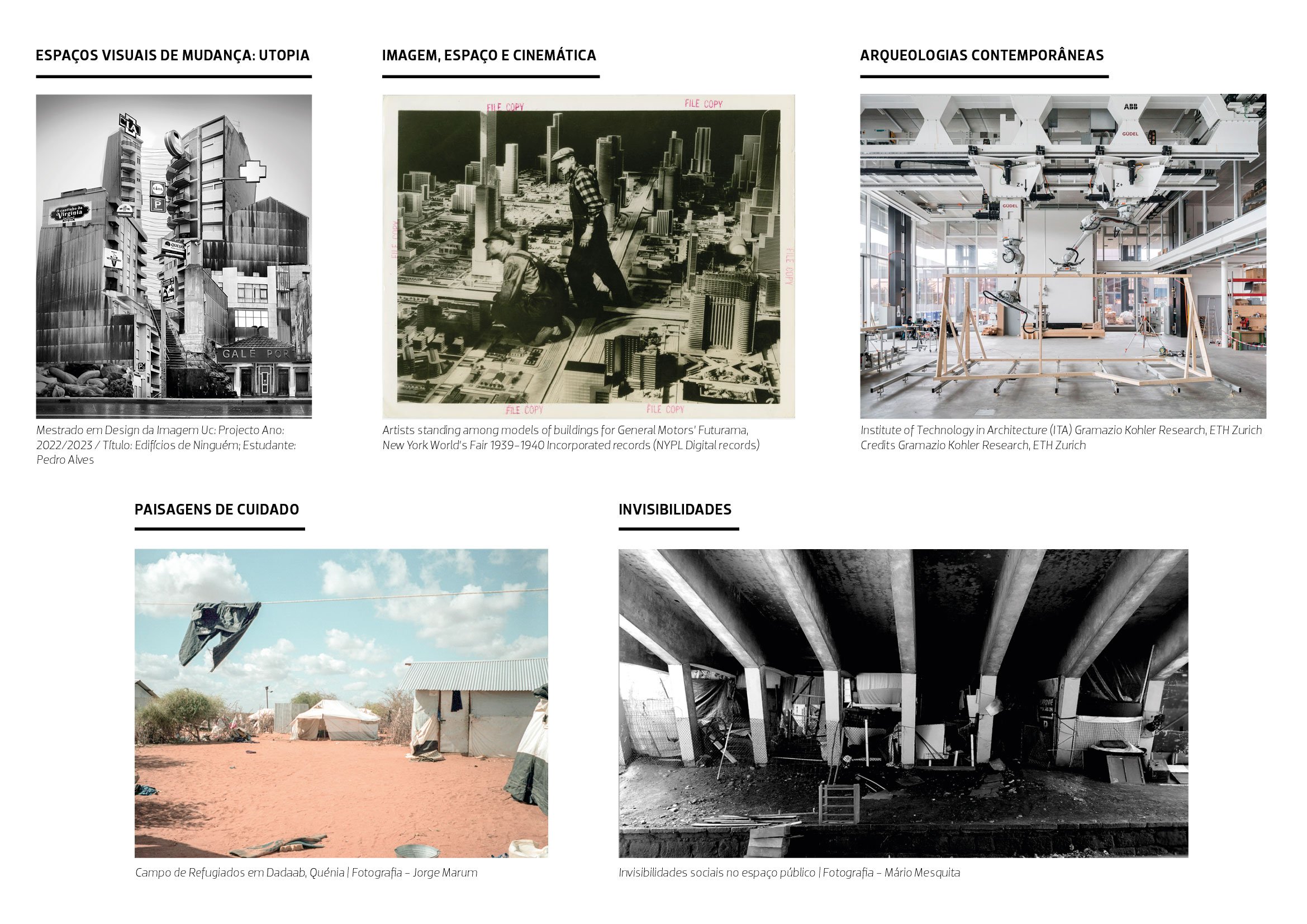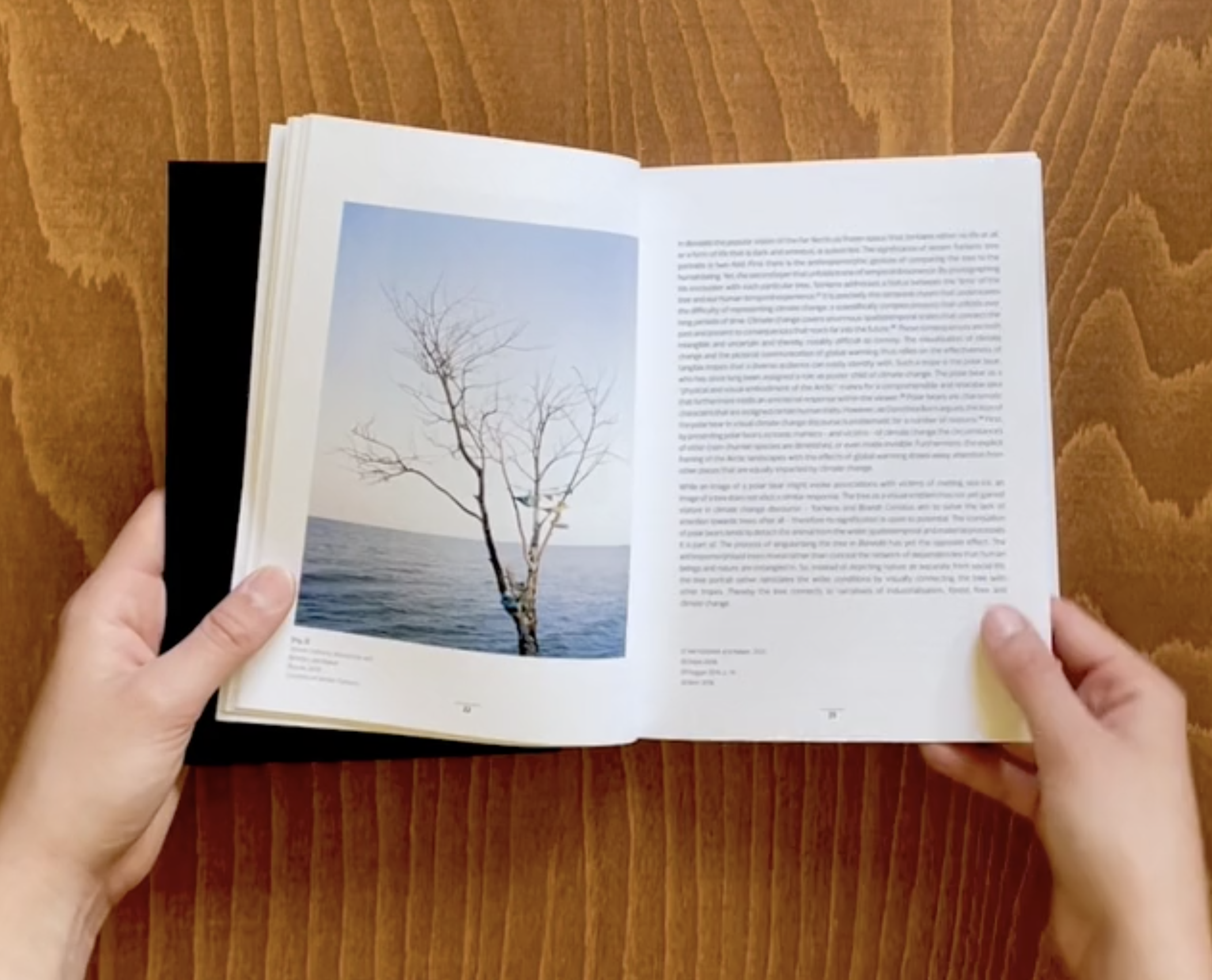SCOPIO MAGAZINE ARCHITECTURE, ART AND IMAGE
OPEN CALL: UTOPIA
Scopio Magazine - Architecture, Art and Image Vol. 1 | MANUSCRIPT deadline: 1 SEPTEMBER 2023 | Utopia
Editor-in-chief: Pedro Leão Neto
Managing editor: Maria Neto
Editors: David Leite, Fátima Vieira, Isa Clara Neves, José Carneiro, Maria Neto, Mário Mesquita, Miguel Leal e Pedro leão Neto
Manuscript deadline: the 9th of October 2023
Authors will be informed of the result of reviews in November 2023
Publication date (tbc): by December 2023
scopio Magazine Architecture, Art and Image is currently accepting submissions for its first volume of its thematic cycle "Utopia", addressing a modern notion of Utopia that entails the idea that we must have ambitious visions for the future and propose operational paths, in a creative and collaborative manner, towards the transformation of our society. As advocated by Ernst Bloch in The Principle of Hope, published eight decades ago, utopias offer visions of a better future world and are thus to be seen as part of our current reality and not excluded from it. They are, in this sense, wishful images that direct us towards real possibilities and help us forge a path towards social transformation.
We are interested in works that: 1) reveal the potential of Image as a medium capable of crossing borders and dislocating boundaries between different Architectural and Artistic subject areas; 2) are inspired by broad notions of creativity, innovation, and cybernetics as drivers of social and institutional co-evolution processes; 3) explore the potential of the world of Utopia and Image to inventively question and address cross-cutting problems affecting Architecture, Art and Image. Although we welcome individual works, we encourage the creation of multidisciplinary teams.
With this Open Call "Architecture, Art and Image: Utopia", published in a special edition scopio Magazine AAI Volume 0, we initiate a new cycle of the publication, integrating theoretical and field work that enables us to rethink the role of Utopia in the very complex democratic societies we live in, and particularly in the universe of AAI. We intend to explore the idea of Utopia as a mental tool for architectural design, breaking, in this way, with standardised patterns of thinking and creating possibilities for innovative and poetical idealisations of space. We will champion forward-looking visions able to materialise the impossible, i.e., realistic utopias.
We are interested in welcoming imaginative questions on space appropriation, cybernetics and digital media, urban perceptions, socio-cultural diversity and image thinking. We will be addressing transversal problems within interdisciplinary debates on: 1) how Architecture and Public Space define our cities, how cities define Territories and how all this can be explored and communicated through the world of Image; 2) how technology and digital media are actively present in all this process, and how all this is interconnected; 3) how the idea of Utopia can illuminate Innovative, Sustainable and Inclusive built environments and enhance the participation of the communities along the process.
We know that the wheel does not need to be invented; we will thus look back to the modernist ideals that emerged at the beginning of the 20th century – namely in the sphere of architecture and urban planning – to consider utopian visions and proposals such as the Ville Radieuse, by Le Corbusier, or the Garden City, by Ebenezer Howard, as these utopian visions were at the root of many spatial and social transformations that marked the entire century, and are still influential in our times. In fact, even if, in many cases, the worlds idealised by modernists did not become realities, or even if they resulted in the construction of slightly dystopian spaces and architectures, they did contribute to many positive achievements. After the second world war, in particular, the modern movement invested in urban planning and architectures that successfully addressed problems related to the lack of primary housing conditions and good-quality public spaces in many European and North American cities.
On the other hand, we are interested in amplifying and rethinking the Utopian process of thought within the complex concept of nowadays' democracies, as described by Daniel Innerarity in A Theory of Complex Democracy. We believe we need to advance forms of utopian thinking congruent with the complex organisation of our societies – and its institutions –capable of actively influencing changes leading to sustainable and regenerative development and the construction of a more equitable society.
VISUAL SPACES OF CHANGE: UTOPIA | OPEN CALL
Editors: José Carneiro and Pedro Leão Neto
Contemporary photography projects for envisioning utopian or dystopian futures
The open call for this section intends to capture theoretical articles and/or visual essays that research and critically explore different visual communication strategies based on the development of contemporary photography projects, focusing on how architecture and the different dynamics of urban change allow us to foresee possible futures, utopian or dystopian.
We believe that contemporary photography enhances the exploration of future views on architecture, the city and the territory, also enabling the identification of transforming paths of the spaces represented. We are, therefore, interested in studies and projects where the image is significantly present — with particular focus on photography — as an instrument of research and communication capable of crossing borders and shifting limits between different disciplinary areas. Work capable of dealing with transversal problems that affect different territories, contributing to a spatial transformation and social integration and, therefore, more positive. It is intended to welcome projects that deepen more and less speculative theoretical-practical dynamics that have as their main focus the identification of problems inscribed in the complexity of contemporary life and what comes from it.
Some topics of interest for contributions, among others:
Discussion of interactions, interferences, intersections and interpretations between the virtual world of photography, manipulated visual narratives, utopian or dystopian, and contemporary architecture;
Critical analysis of how the constructed and manipulated images allow us to suggest a new utopian and dystopian reading of space, enhancing the creation of idealized scenarios of existing public and architectural spaces, crossing and transgressing certain limits, such as, for example, the way of acting on the more and less virtual reality, creating new relationships between individual and collectivity;
Visual spaces of change based on images that significantly expand and enhance the practice of photography in the creation of new imaginary scenarios of current architecture and public spaces;
Contemporary photography projects with utopian or dystopian visual readings that encourage the expansion of architectural practice and theory beyond the limitations of its physical and constructive materiality;
Historical and critical analyzes around some of the ideals that emerged throughout the 20th century, and the importance of a visual legacy that communicates with these utopian visions, such as, for example, the modernist paradigms of Ville Radieuse, of Le Corbusier, or of the City Garden, by Ebenezer Howard or in the 1960s, the visual projects by the Archigram and Peter Cook collective communicating 'pulsating' mobile cities of the future.
IMAGE, SPACE AND CINEMATICS | OPEN CALL
Editor: Miguel Leal
Artists standing among models of buildings for General Motors’ Futurama, New York World’s Fair 1939-1940 Incorporated records (NYPL Digital records)
The call for this section opens up to the field of relations between image, time and space. All mediation devices contain an intense productive force, in a complex mix between real and imaginary. To a certain extent there is, for example, no landscape without mediation, without that productive intensity of the media. We are therefore interested in how the realm of the image and the movement-image change our perceptions — real, political, or symbolic — of time and space. By extension, we are also interested in thinking about the idea of drifting and walking as forms to explore and to question the space, the landscape or the city. Based on a topological understanding of the media, this section will try to cross the field of mediation with art, cinema, landscape, performing arts and other time-based arts, as well as with landscape, urban space or architecture, not only from the point of view of contemporary experience but also from a more historical, archaeological or visionary perspective.
For this issue we would like to see in particular, but not only, these topics approached from the construction of utopian (or dystopian) imaginaries, such as through the use of different mediation apparatuses to manipulate, combine or subvert the notions of time and space.
Some topics of interest for contributions, among others:
Utopia and dystopia in art and cinema
Mediation and the shaping of landscape
Space, landscape, or the city in film and further time-based media
Maps, cartography, and other symbolic representations of space
Art and landscape
Walking and drifting as aesthetic practices
Performative arts
Apparatus of mediation, surveillance or panoptical
Mediation and the logistics of war
Fictional worlds
Fake landscapes, scenarios and camouflage
Media Archaeologies
CONTEMPORARY ARCHEOLOGIES
Editor: Isa Clara Neves
Conscious innovation and inclusive participation in built environment
The call for this section focuses on findings related to the construction of digital culture in architecture, namely reviews of the best materials that took the digital design to an emerging maturity level. The imminent arrival of Artificial Intelligence in the realm of architecture and the current debate on automation, brings a sense of déjà vu. In fact, Automation and AI are not new subjects in Architecture and Urbanism. Speculation about the application of computation in Architecture started early, in the 60s and 70s, with researchers such as Nicholas Negroponte, Gordon Pask, or Yona Friedman.
We are interested in papers which focus on the way in which technological contexts, digital or pre-digital, offer us tools related to systemic design and participatory processes in the built environment, to think about actual territory of the connections between art, architecture and digital.
We call for the presentation of works that relate the past of utopia with current projects, in which witnessed to the use computational models that according to which designers may be instructed on needs felt by citizens, using the technology to reach more holistic results, fostering feedback and co-creation - projects that, addressing the notions of Utopia and visionary futures, may be implemented as collaborative projects for the transformation of our society.
Some topics of interest for contributions, among others:
Big Data in Architectural Design
AI for design and built environment
Art, Design and Digital Culture
Collaborative and participative design
Digital design for sustainable buildingsHistory and Future of Culture Digital
Interactive and responsive environments
History of Digital Tools in Design
LANDSCAPES OF CARE | OPEN CALL
Editor: Maria Neto
Refugee camp in Dadaab, Kenya | Fotografia - Jorge Marum
The call for this section focuses on projects and theories that explore how architecture, art and image may contribute to our understanding of the very complex dimensions of the world resulting from relationships of care. The challenge is to think about how we can respond to current and urgent issues – forced displacement, disasters and adverse effects of climate change, human right violations, political, social, economic and health inequalities, disruptive globalisation influences, etc. – and tackle their impact on humans and society. Within this context, we are interested in projects that address the notions of Utopia and visionary futures towards spatial, social and political transformation.
Some topics of interest for contributions, among others:
Global movements: migration, displacement and refugees
Conflict, disaster risk, and post-conflict/post-disaster
Shelter e territory
Refugee camps
Unequal cities
Urban planning, climate adaptation and spatial justice
INVISIBILITY | OPEN CALL
Editor: Mário Mesquita
Social invisibilities in public space | Photography - Mário Mesquita
The call for this section focuses on investigations that provide thickness and context to what, despite "not being seen", is decisive in the consolidation processes of urban life. We want to talk about the "invisible city" and the "visible city" in a utopian mode to foster reflection, questioning, debate and understanding of the processes of contemporary transformations of the "urban being". This section will thus be offered as a visual and written forum for the production of critical thinking about invisibilities and utopia.
Invisibilities have been always a face of utopia. Considering this as evidence, in the context of the connection between the different paths of our society, this is a social problematization of ideas and processes, linking arts, humanities and science. Utopia should not be an “utopia”. Utopia should be able to exist as a goal.
We must be able to develop these dreams, talk about them and, above all, discuss. To create a common public space, to create and promote communities. Trying to make visible the invisible. In this common sense, in the history of humanity, they are the real engines of the great transformation and without utopia, this invisible utopia, creation and progress wouldn’t exist.
Some topics of interest for contributions are, among others:
Social and urban invisibilities as utopias
The utopia of 3rd mission of the University
The invisible city and its utopias
The utopias of common and communities
Invisibilities as humankind utopias
The utopias as processes of making visible the invisible
The Editorial Team will have the responsibility of sending all submissions for review: theoretical entries will be blind peer-reviewed; visual essays will be reviewed by the Editors and another reviewer. Authors will be informed of the result of reviews in October 2023. Theoretical papers and visual essays must be edited per the reviewers' comments until the 1st of December 2023 so that they can be published in Volume 1, No. 1 - scopio Magazine Architecture, Art and Image: Utopia, the first issue of this cycle.
Submission instructions
Login or Register to make a submission.
To submit your proposal, the authors have to register in the scopio Magazine AAI OJS platform and submit through it their theoretical paper (between 3,000 to 6,000 words) or their visual essay (length between 6 to 8 pages, plus text between 500 to 1,000 words) until the 1st of September, 2023.
Submission guide help
For any queries:
Please contact our Editors at scopiomagazine@arq.up.pt
ABOUT scopio Magazine Architecture, Art and Image
scopio Architecture, Art and Image is an open access, annual, and research-orientated publication that aims to offer critical, explorative and informative text around the universe of AAI. It aims to provide a space for debating and (re)thinking Architecture, Art and Image in contemporaneity with a significant multi-disciplinarity and interdisciplinary approach.
The publication benefits from a renewed multidisciplinary Editorial Team and Scientific Committee that includes international researchers. The publication, still displaying scopio's original graphic identity and brand, is now available in print and digital editions.
The research editorial project has the joint coordination of FLUP/CETAPS, FBAUP/i2ADS and FAUP/CEAU, the latter being the project leader
Contacts
scopio Magazine Architecture, Art and Image
scopiomagazine@arq.up.pt
Tel: +351 226 057 100
scopio Magazine Architecture, Art and Image | Print ISSN: 1647-8266 Online ISSN: 1647-8274 is coordinated by the Center for Studies in Architecture and Urbanism (CEAU) - Research Group Architecture, Art and Image (AAI), Faculty of Architecture, University of Porto, Portugal (FAUP), Centre for English, Translation and Anglo-Portuguese Studies, FLUP (CETAPS/FLUP) and Research Institute in Art, Design and Society, Faculty of Fine Arts of the University of Porto (FBAUP / i2ADS)
and is supported by national funds from the Portuguese Foundation for Science and Technology (FCT), I.P., through research grant for the CEAU Strategic Project at FAUP, award no. UIDB/00145/2020, financed by the Foundation for Science and Technology (FCT).
scopio Magazine Architecture, Art and Image is an open-access journal. Unless otherwise noted, this site's contents are licensed under a Creative Commons Attribution Non-Commercial-NoDerivatives 4.0 International license.
© website scopio Magazine Architecture, Art and Image / U. Porto Press / scopio Editions









